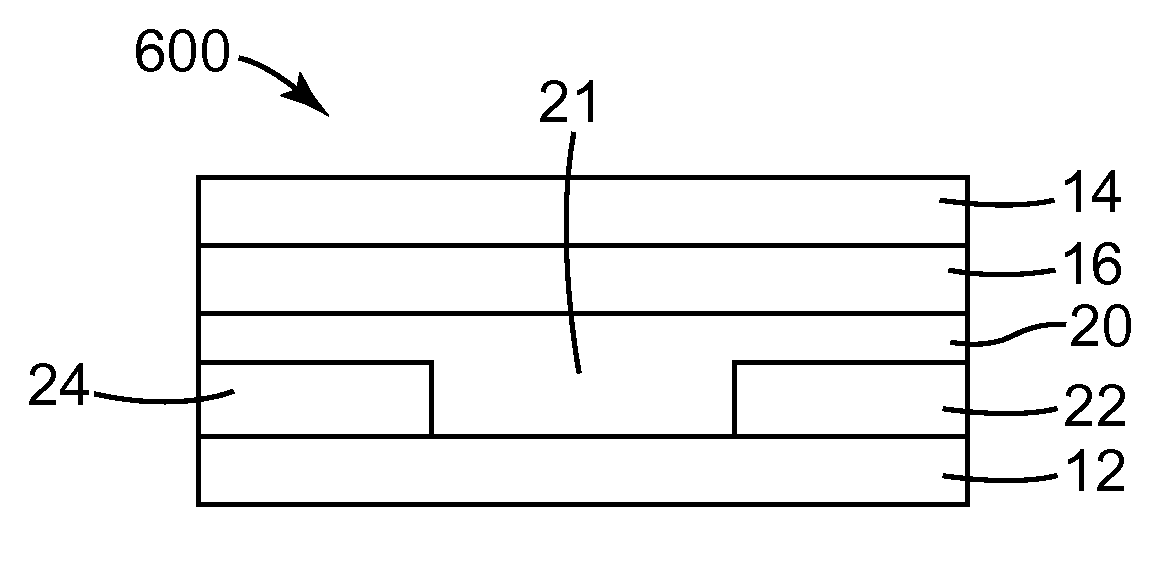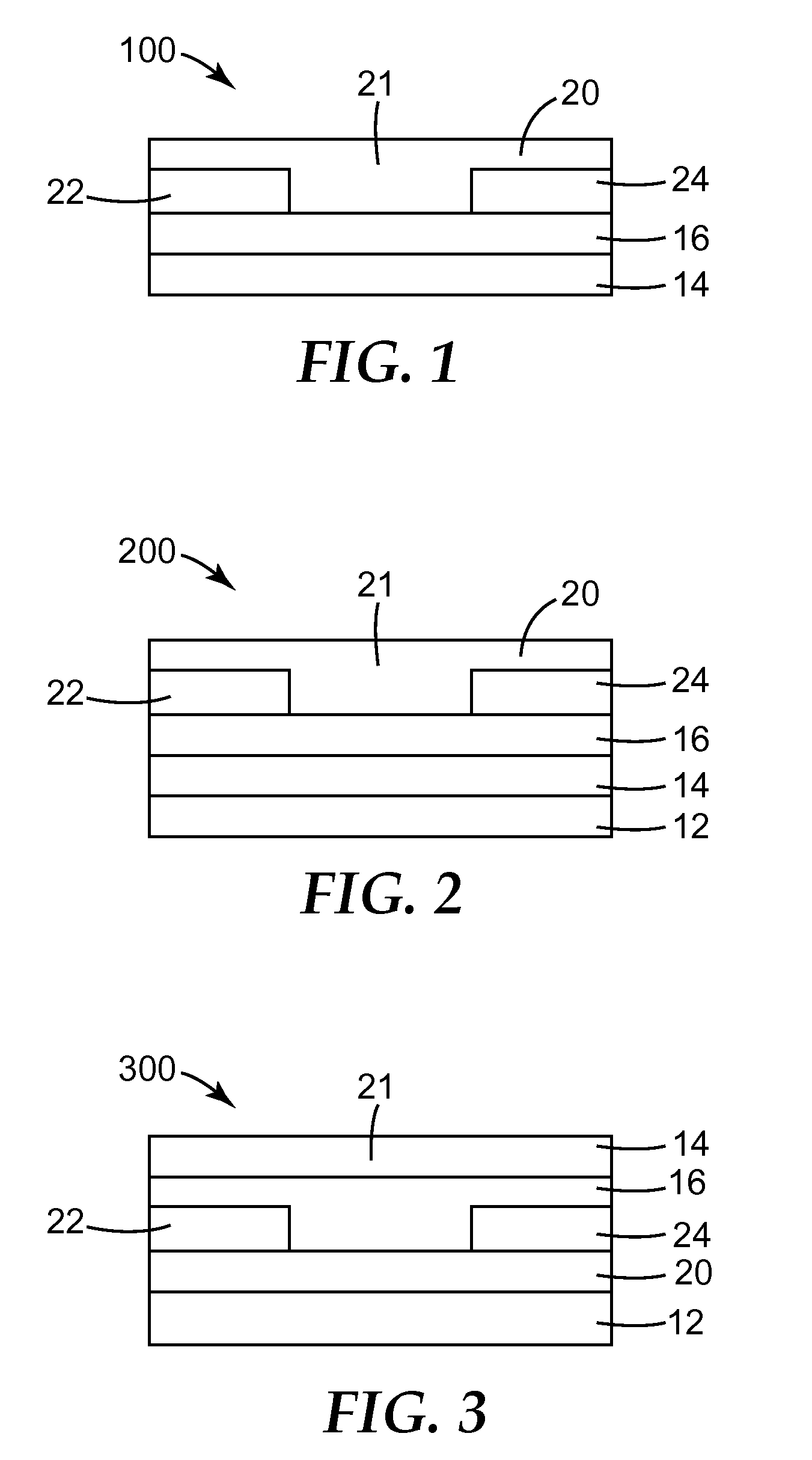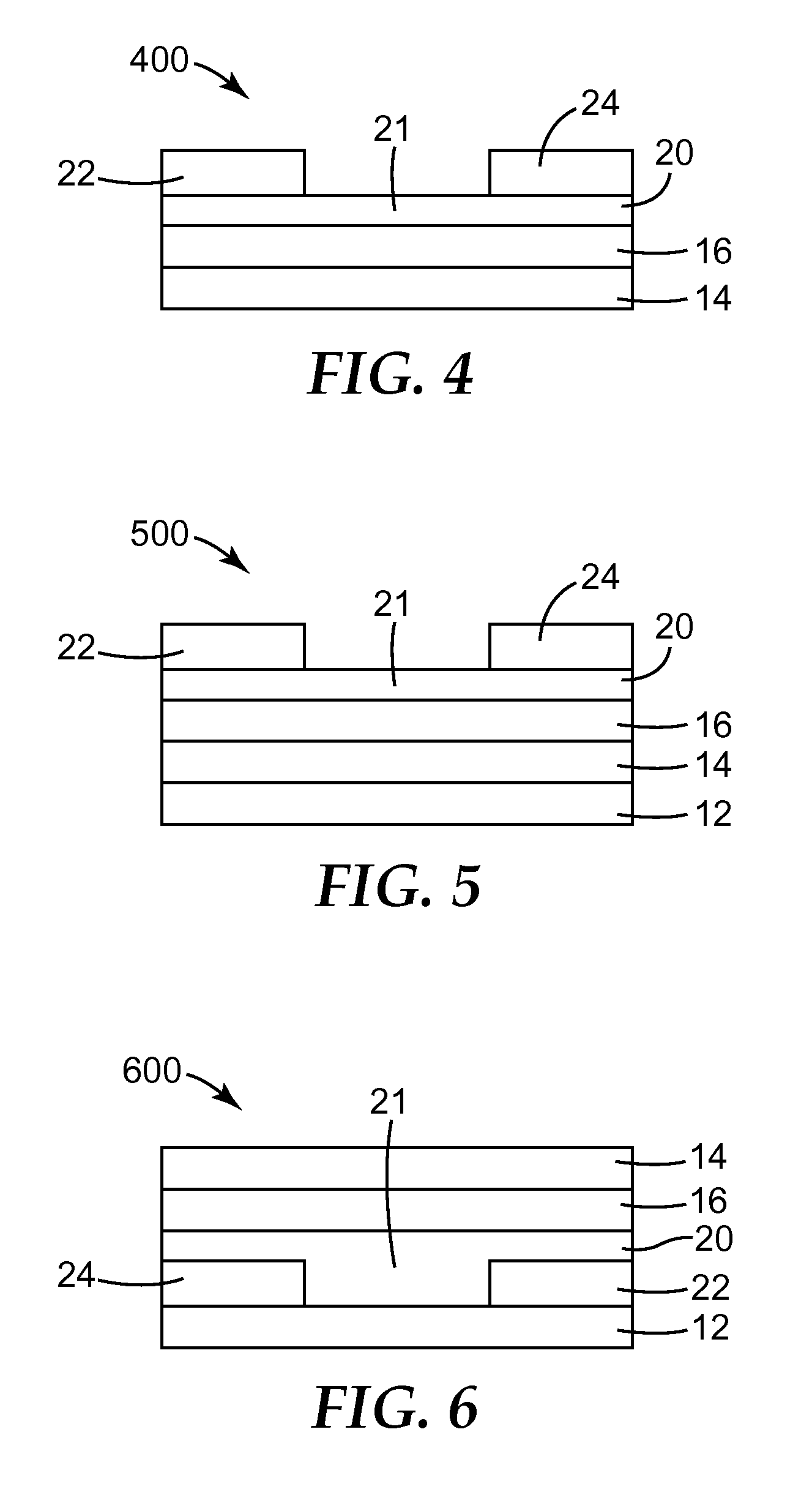Solution Processable Organic Semiconductors
a technology of organic semiconductors and processable layers, applied in semiconductor devices, solid-state devices, thermoelectric devices, etc., can solve the problems of pentacene being difficult to synthesize and purify, pentacene being difficult to form semiconductor layers using solvent-based deposition techniques, and pentacene being prone to oxidation or dimerization reactions
- Summary
- Abstract
- Description
- Claims
- Application Information
AI Technical Summary
Benefits of technology
Problems solved by technology
Method used
Image
Examples
preparatory example 1
Synthesis of 2,6-dibromo-9,10-bis[(triisopropylsilyl)-ethynyl]anthracene
[0106]Triisopropylsilylacetylene (12.32 grams, 67.5 mmol) and dry hexane (140 mL) were added under a dry nitrogen blanket to an oven-dried round bottom flask (1 L). Butyl lithium (2.7 M in hexane, 14.5 mL, 39.2 mmol) was added dropwise under dry nitrogen through a syringe to the mixture. After addition, the mixture was stirred at room temperature for 2 hours. This colorless solution, was then added to a suspension of 2,6-dibromoanthraquinone (5.49 grams, 15.0 mmol) in dry THF (300 mL) under dry nitrogen. The solution turned red immediately and the 2,6-dibromoanthraquininone dissolved in minutes. The mixture was stirred at room temperature overnight and the solution became dark red. When deionized (DI) water (6.0 mL) was added, the color changed to light red, and a white precipitate appeared. Tin (II) chloride (8.088 grams, 42.6 mmol) in hydrochloric acid (HCl) (18 mL, 10 weight percent) aqueous solution was then...
preparatory example 2
Synthesis of 2,6-bis-(4,4,5,5-tetramethyl-1,3,2-dioxaborolan-2-yl)-9,10-bis[(triisopropylsilyl)ethynyl]anthracene
[0107]2,6-dibromo-9,10-bis-[(triisopropylsilyl)ethynyl]anthracene (5.225 grams, 7.5 mmol) from Preparatory Example 1, bis(pinacolato)diboron (4.763 grams, 18.8 mmol), potassium acetate (2.940 grams, 30.0 mmol), and chloroform (CHCl3) (100 mL) were charged to a 250 mL flask under dry nitrogen. A yellow solution with suspended KOAc was obtained. The suspension was degassed to remove traces of oxygen. [1,1′-bis(diphenylphosphino)ferrocene]dichloropalladium (0.205 grams) was then added under dry nitrogen. The solution turned orange. The mixture was refluxed at 70° C. for 3 days and then cooled to room temperature. It was washed with DI water (100 mL×3) and dried over magnesium sulfate (MgSO4). The organic solvent was removed by rotary evaporation. The solid residue was purified by column chromatography (silica gel, CHCl3) and recrystallized from ethyl acetate. Orange needle c...
example 1
Synthesis of BT-TIPS-An (2,6-Bis(thiophene-2-yl)-9,10-bis-[(triisopropylsilyl)ethynyl]anthracene)
[0112]The crude product (yield: 99%) from precipitation was further purified by zone sublimation under vacuum (1.2×10−6 Torr). The source zone temperature was set at 280° C. and the middle zone was at 240° C. Orange product was collected in the middle zone.
PUM
| Property | Measurement | Unit |
|---|---|---|
| decomposition temperature | aaaaa | aaaaa |
| boiling point | aaaaa | aaaaa |
| boiling point | aaaaa | aaaaa |
Abstract
Description
Claims
Application Information
 Login to View More
Login to View More - R&D
- Intellectual Property
- Life Sciences
- Materials
- Tech Scout
- Unparalleled Data Quality
- Higher Quality Content
- 60% Fewer Hallucinations
Browse by: Latest US Patents, China's latest patents, Technical Efficacy Thesaurus, Application Domain, Technology Topic, Popular Technical Reports.
© 2025 PatSnap. All rights reserved.Legal|Privacy policy|Modern Slavery Act Transparency Statement|Sitemap|About US| Contact US: help@patsnap.com



